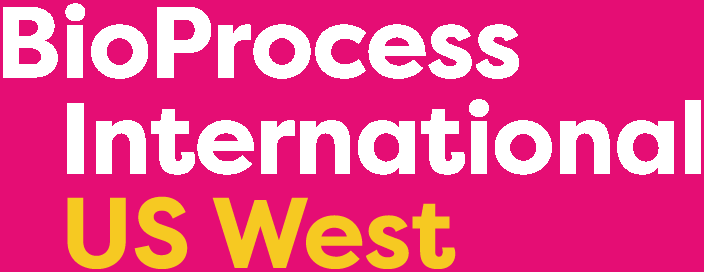Keeping Secrets Safe: Considerations for Trade Secret Protection in the United States amid Biotechnology LayoffsKeeping Secrets Safe: Considerations for Trade Secret Protection in the United States amid Biotechnology Layoffs

Layoffs have been a persistent trend in the biotechnology industry over the past few years, with 2024 bringing more of the same. Companies in the midst of layoffs must navigate complexities from internal and public messaging to the logistics of en masse technical offboarding. But one underexamined concern is worthy of due consideration: the risk of trade secret misappropriation.
Under US federal law and the laws of most states, information can qualify as a trade secret if it is subject to reasonable measures to protect its secrecy and has (actual or potential) economic value because it is not generally known to, or readily ascertainable by, other people who can use it.
Unlike with patents, for example, there is no government authority that registers trade secrets and grants them legal protection against unauthorized use. Instead, a trade secret’s value depends on its confidentiality, and its protection hinges largely on whether its owner takes reasonable steps to keep it secret.
The question of what constitutes “reasonable measures” to protect trade secrets differs based on the facts of the situation. As noted in WWMAP v. Birth Your Way Midwifery, a recent case in Florida, courts consider a slew of factors when deciding whether a company’s efforts to protect their trade secrets were reasonable (1). Those include
• the nature of the purported secret
• its economic value relative to the costs of implementing security measures
• the probability of misappropriation
• the magnitude of the harm that could result from misappropriation
• the business entity’s size and number of employees
• the extent of the organization’s need to disseminate the secret to exploit its economic value.
In other words, there is no one-size-fits-all approach to adequately protecting trade secrets; what is reasonable for one company may be woefully inadequate for a second company and overkill for a third.
But for any business, be it a small biotechnology startup or a multinational pharmaceutical corporation, layoffs increase risks for trade secret misappropriation. A group of employees leaving naturally poses a greater risk of inadvertent disclosure than does the departure of a single employee. Further, laid-off employees might depart with ill will toward their former employer, which can motivate some to misuse that company’s information. Organizations would be well served to protect trade secrets carefully before and during layoffs — and, conversely, to ensure that they do not obtain trade secrets inadvertently upon hiring employees who were laid off elsewhere.
It bears repeating that no one-size-fits-all measure protects against trade secret misappropriation. Nonetheless, the below considerations can serve as a helpful resource as companies consider how best to protect trade secrets given the nuances of their business, the circumstances surrounding a layoff, and all other facts specific to their situation.
Before Layoffs: Business as Usual
In a perfect world, company leaders would think carefully and strategically about trade secret protection not in the middle of a large-scale layoff, but well beforehand. Companies that integrate trade secret protections into their ordinary course of business might find it easier to protect their secrets if a layoff occurs later on. Thus, even before a layoff is on the horizon, managers might consider whether to implement some or all of the following practices to protect trade secrets.
Electronic Security Measures: Technologies such as password-protected company accounts and computers, two-factor authentication, virtual private networks (VPNs), endpoint protection, and/or intrusion detection can serve as first-line defenses against trade secret theft and other data loss.
Clear Policies and Trainings: Clear, written guidance can help to educate employees about the importance of protecting company trade secrets. Companies might consider clarifying the categories of information — whether technical, engineering, scientific, or otherwise — that it considers to be trade secret and/or promulgating policies about information security, remote work, and acceptable use of electronic devices and services. Likewise, regular training can help employees to understand and implement specific steps to guard against misappropriation.
Monitoring Systems: In addition to VPNs and endpoint protection, many tools can detect and/or prevent data exfiltration. Some can detect when employees attempt to send files or sensitive information to noncompany emails or storage sites and stop those transmissions before they occur; other tools can record the details of such transmissions and preserve evidence for future investigations. Companies should evaluate the costs and benefits of such tools and consider whether it makes sense, in the overall context of their businesses, to implement such options.
During Layoffs: Offboarding and Investigation
When companies face impending layoffs, they will be well served to have an established plan for preventing trade secret misappropriation. Depending on a company’s circumstances, the following measures might be worth considering.
Performing Exit Interviews: Interviews with departing employees can be an effective way to remind them to protect a company’s intellectual property, including trade secrets and other confidential information. Human resources and/or legal personnel might conduct such interviews, whether in person or remotely, and memorialize relevant details about the conversations in writing. During an interview, the facilitator might wish to
• reiterate the importance of protecting the company’s trade secrets and explain the protections available under federal — and often state — law
• provide a copy of the departing employee’s employment or consulting agreement(s), particularly if those agreements require the employee to protect the employer’s trade secrets and confidential information after termination
• remind the employee to return any company property, including electronic devices (e.g., company computers and phones), security devices (e.g., employee badges), and confidential information (e.g., documents, notes, and messages, whether hard copy or electronic)
• inquire into whether the employee has accepted a job offer from a competitor.
Employees often are not required to disclose information about pending employment, but they may choose to do so. Such knowledge can help employers to ensure that they take appropriate precautions against trade secret misappropriation.
Conducting Exit Surveys: Conducting real-time, individualized exit interviews might be infeasible during a sudden layoff or one affecting hundreds of employees. In such cases, consider whether it makes sense to implement an alternative procedure, such as a survey covering the same or similar information.
Helping Employees Locate Confidential Information: To help departing employees search thoroughly for business information, companies might consider providing employees with a list of locations to check. Those might include physical locations:
• home offices — e.g., desk drawers and file cabinets
• closets, garages, attics, and other spaces where outdated materials might be stored
• bedside tables and drawers
• vacation homes (e.g., desk drawer, bedside table)
• cars (e.g., trunk and backseat).
Electronic locations should be investigated as well:
• company computers (if departing employees are allowed to keep them)
• personal computers, including old/unused and spouse/family computers
• removable storage devices (e.g., CDs, flash drives, and external hard drives)
• smart phones, including photos, messages, note-taking apps, and voicemail
• tablets, including photos, messages, and note-taking apps
• personal email, including dormant accounts
• personal chats, including those on WhatsApp, Signal, and similar services
• cloud-storage accounts (e.g., Google Drive, Dropbox, OneDrive, and iCloud)
• social-media accounts (e.g., Facebook and LinkedIn).
Termination Certificates: Companies might require departing employees to sign certifications that they have searched for nonpublic information from the company; have deleted or returned any information that they found; and will return, delete, and refrain from using additional company information that they find in the future.
Retrieve Company Devices: To the extent that departing employees have company devices (e.g., computers, phones, and tablets), organizations might require departing employees to return such devices on their last day of work or to ship them to the company as soon as possible thereafter. Consider maintaining an inventory of employees’ devices to ensure that they are accounted for after termination and sending regular reminders if departing employees do not return their devices promptly.
Remove Electronic Access: Ensuring that departing employees do not have access to company materials for longer than necessary can be another effective way to prevent trade secret misappropriation. Consider whether circumstances warrant suspending departing employees’ access to particularly sensitive files or locations immediately after they are informed of termination. And a company’s information technology (IT) team can have a plan in place to deactivate terminated employees’ company accounts promptly and/or to remove those employees’ electronic access to all company documents.
Further Investigation: If circumstances indicate that an employee is likely to misappropriate trade secrets (or has done so), then an individual investigation might be warranted. That might include
• a review of the employee’s company email for messages or documents forwarded to personal email accounts
• a search of the employee’s communications for key words, such as the names of competitors
• examination of the employee’s company computer for suspicious activity from removable storage devices (e.g., a USB drive connected in violation of company policy)
• a survey of the browsing history on the employee’s company computer for evidence of suspicious or unauthorized access to cloud-storage sites (e.g., an employee’s personal Google Drive) or websites providing file-wiping software
• a forensic analysis of the employee’s company computer, whether by an in-house IT department or an outside vendor, to search for additional technical evidence of misappropriation.
Legal Action: If evidence of misappropriation is discovered, then companies should consult in-house or outside counsel about options for recovering their trade secrets and protecting them from disclosure.
The Flip Side: Hiring New Employees
Even as many biotechs are reducing their workforces, other companies are growing — and inevitably will hire employees who were laid off by their competitors. Hiring companies face a different challenge: ensuring that their new employees do not use trade secrets or confidential information from their prior jobs. Hiring companies have a vested interest in preventing such misuse, which could subject the company to liability for trade secret misappropriation. The following strategies could help to minimize misappropriation risks.
Understanding Preexisting Contractual Obligations: Hiring companies can benefit from learning the details of new hires’ continuing contractual obligations to their prior employers. In addition to illuminating potential trade secrets issues, gaining that information can help new employers to spot and avoid potential issues with confidentiality provisions and restrictive covenants such as noncompetition and nonsolicitation agreements.
Crafting Contracts Carefully: Hiring companies might consider including in their own employment contracts with their new hires an express provision prohibiting them from using trade secrets or confidential information from their former employers.
As with offboarding interviews, conducting onboarding interviews can be an effective way to guard against trade secret misappropriation. Hiring companies can use such interviews as opportunities to tell new hires not to use or disclose trade secrets from their prior employers — and to state explicitly that the hiring company does not want such information. Hiring companies might also instruct new employees to search for and delete confidential information from their old employers to reduce misappropriation risks further.
Reference
1 WWMAP v. Birth Your Way Midwifery, 711 F. Supp. 3d 1313, 1322 (N.D. Fla. 2024). Casetext 10 January 2024; https://casetext.com/case/wwmap-llc-v-birth-your-way-midwifery.
Laura D. Smolowe is a litigation partner at Akin Gump Strauss Hauer & Feld in Los Angeles, CA ([email protected]). Taylor Benninger is a litigation associate in the San Francisco office of Munger, Tolles & Olson ([email protected]).
You May Also Like






